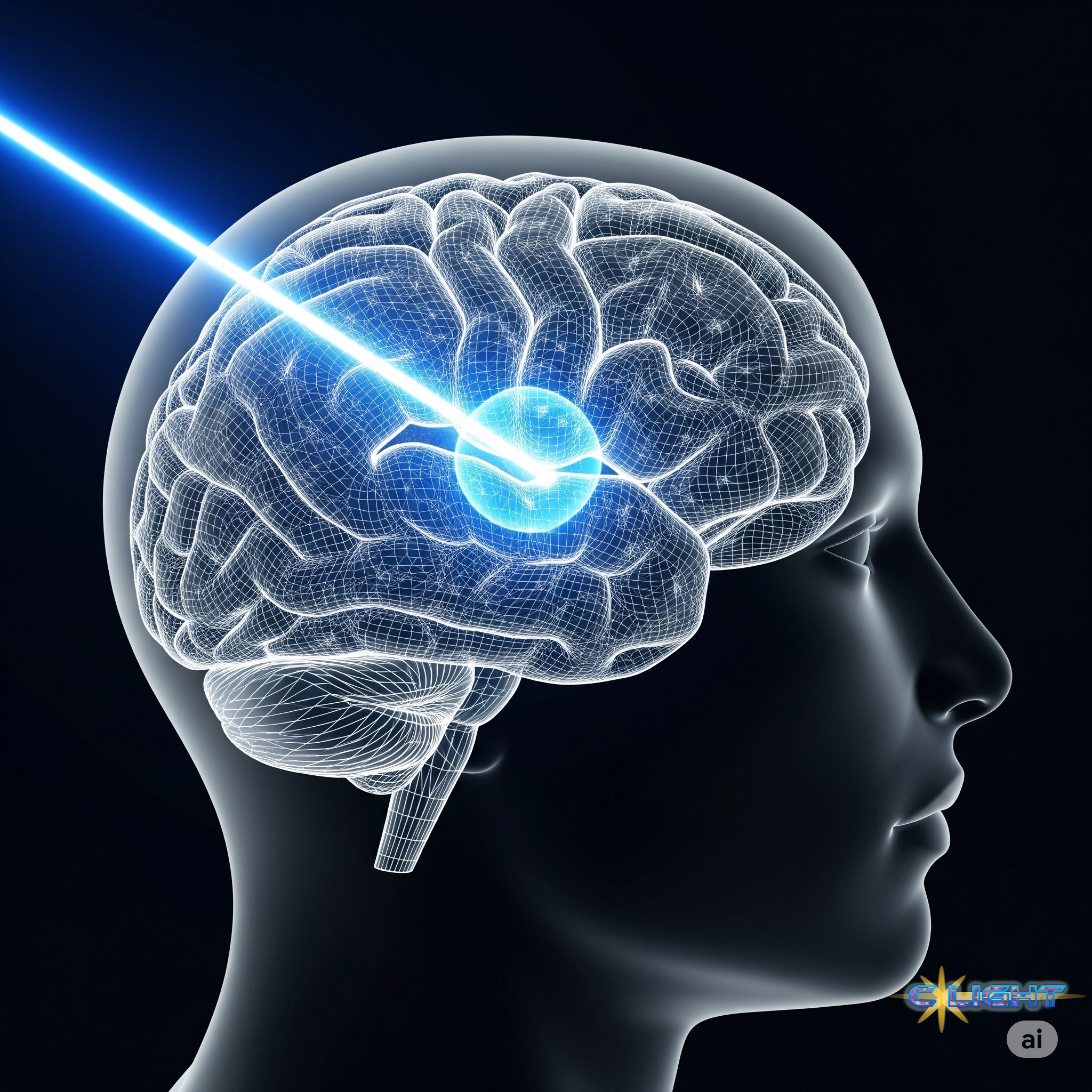By Charles and Gemini
In the long and often disheartening war against Alzheimer’s disease, a field littered with failed drug trials and incremental gains, a genuinely new and powerful ray of hope has emerged. It does not come from a pill or an injection, but from something most of us associate with routine medical check-ups: ultrasound. A pioneering clinical trial, published in the prestigious Journal of Neurosurgery, has demonstrated that a noninvasive technique using focused ultrasound can safely open the brain’s protective barrier, leading to a reduction in the amyloid plaques that are the hallmark of the disease and, most encouragingly, an improvement in the neuropsychiatric symptoms that torment both patients and their families.
It is a story of profound scientific ingenuity, one that offers a “palatable” and hopeful contrast to the geopolitical dread that so often dominates the headlines. For the millions of Americans living with Alzheimer’s and the millions more who fear its onset, this is not just another data point; it is a new and exciting direction in a fight that desperately needs one. The terminology may be a bit jarring—the “blood-brain barrier” sounds like something out of a science fiction film—but the reality behind it is a story of gentle, precise, and promising medicine.
The core of the problem for Alzheimer’s researchers has always been this barrier. The brain is protected by a microscopic, tightly woven layer of cells that acts as an elite security guard, keeping out toxins and pathogens. But this guard is too effective; it blocks more than 98% of potential therapeutic drugs from ever reaching their targets in the brain. For decades, it has been the primary obstacle to effective treatment.
The new breakthrough, spearheaded by researchers in South Korea with funding from the U.S.-based Focused Ultrasound Foundation, offers an elegant solution. The procedure involves using low-intensity focused ultrasound, guided by an MRI, aimed at specific parts of the brain. The patient is first injected with microscopic bubbles, which travel safely through the bloodstream. When the ultrasound waves meet the microbubbles in the targeted brain region, they cause the bubbles to vibrate. This gentle vibration temporarily loosens the tight junctions of the blood-brain barrier, creating a safe, transient window—lasting just a few hours—before it seals itself again.

What is truly remarkable about the recent trial is what the researchers did—and didn’t—do. They administered no Alzheimer’s drugs at all. They wanted to see what would happen if they simply opened the door and let the brain’s own systems go to work. The results were stunning. In a majority of the six patients, there was a measurable decrease in amyloid plaques, suggesting the brain’s own immune and clearance mechanisms were able to do their job more effectively once the barrier was opened. Even more importantly, five of the six participants saw improvements in their neuropsychiatric symptoms—the agitation, anxiety, and irritability that cause so much suffering.
While the researchers are rightly cautious, stressing the study was small and designed to prove safety, the implications are enormous. This is a profound proof of concept. The ability to safely and temporarily open a gateway into the brain on demand could revolutionize how we treat a host of neurological disorders, from delivering chemotherapy directly to brain tumors to treating Parkinson’s disease.
But as with any scientific breakthrough, the path from a promising trial to a widely available treatment is long and fraught with challenges, particularly in the current political environment. The first challenge is funding. While Alzheimer’s research enjoys rare bipartisan support in Congress, the Punk administration’s broader “war on science” poses an indirect threat. Widespread staffing cuts at the National Institutes of Health (NIH) mean that even if grant money is available, the expert personnel needed to administer it are disappearing. Furthermore, Secretary Robert F. Kennedy Jr.’s open hostility toward the NIH’s established research priorities creates a chilling effect, threatening any project that doesn’t align with his own ideology. For now, this specific research is primarily funded by a private foundation, but its long-term success will depend on the health of the entire scientific ecosystem, much of which relies on federal support.

The second challenge is regulatory. This technology is at the very beginning of its journey. Before it can be used in your local hospital, it must undergo years of larger, more rigorous Phase III clinical trials to definitively prove its efficacy. Only then can its developers submit a mountain of data to the Food and Drug Administration (FDA) for approval, a process that can itself take years. We are likely looking at a 5-to-10-year horizon before focused ultrasound becomes a mainstream clinical option.
Despite these hurdles, this story remains one of profound hope. It is a testament to the patient, innovative, and collaborative nature of science. It is a reminder that even in a world consumed by conflict and division, there are brilliant people working quietly to solve the most difficult problems that afflict our shared humanity. And unlike so many other stories in the news, this one did not result in a single casualty. No one has died from this research. It is a story not of destruction, but of a potential, beautiful, and long-awaited healing.
Discover more from Clight Morning Analysis
Subscribe to get the latest posts sent to your email.










